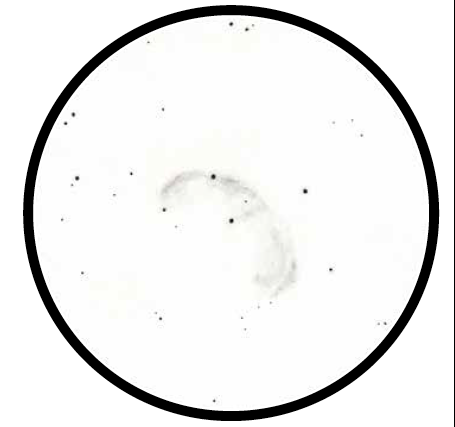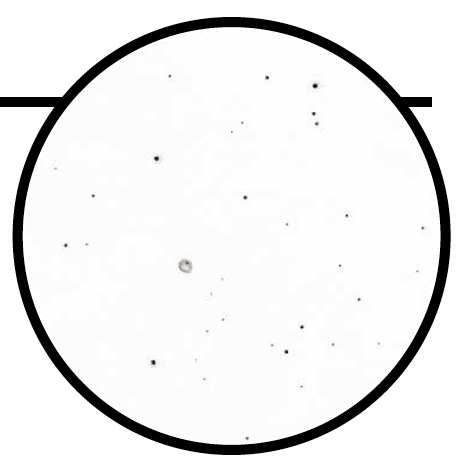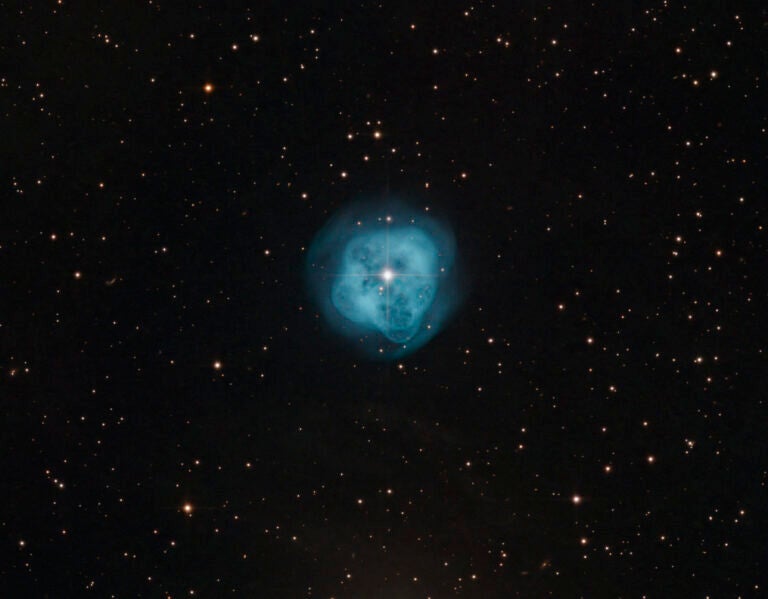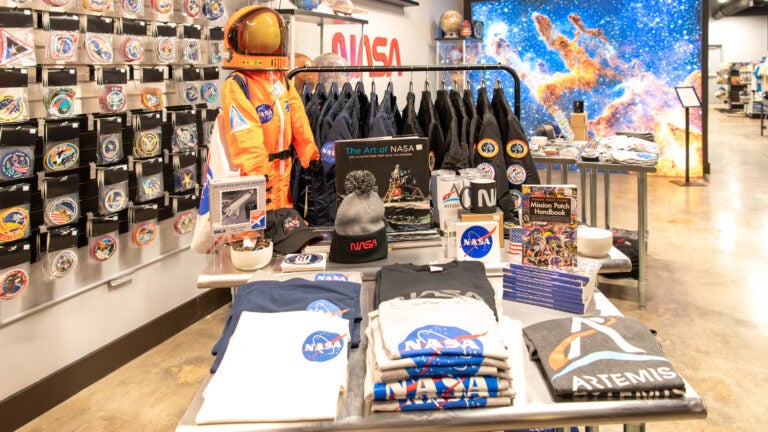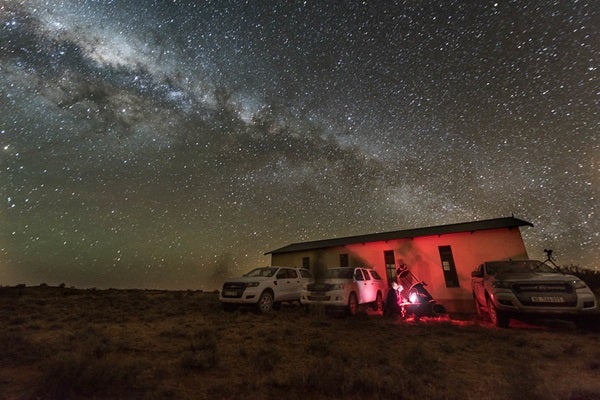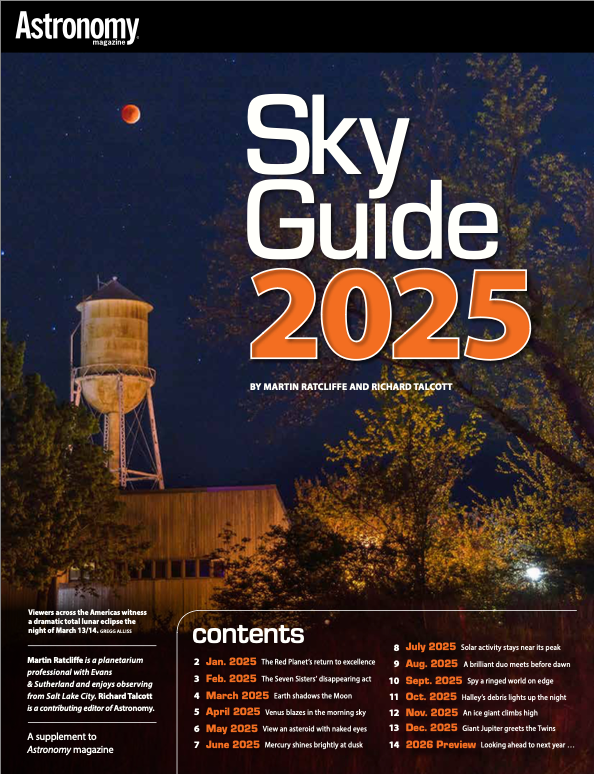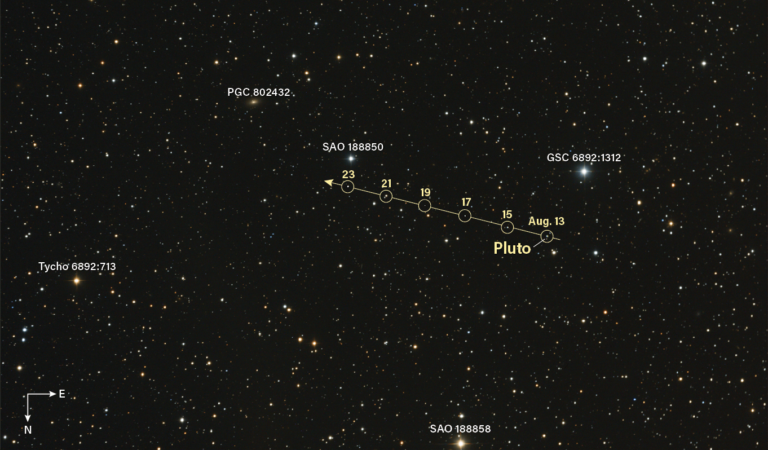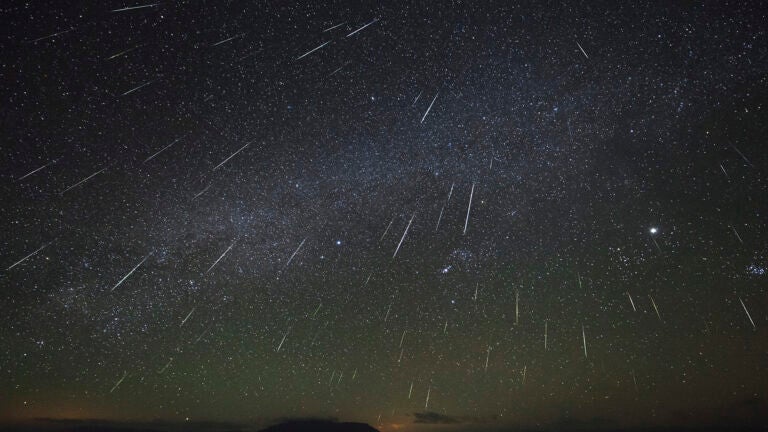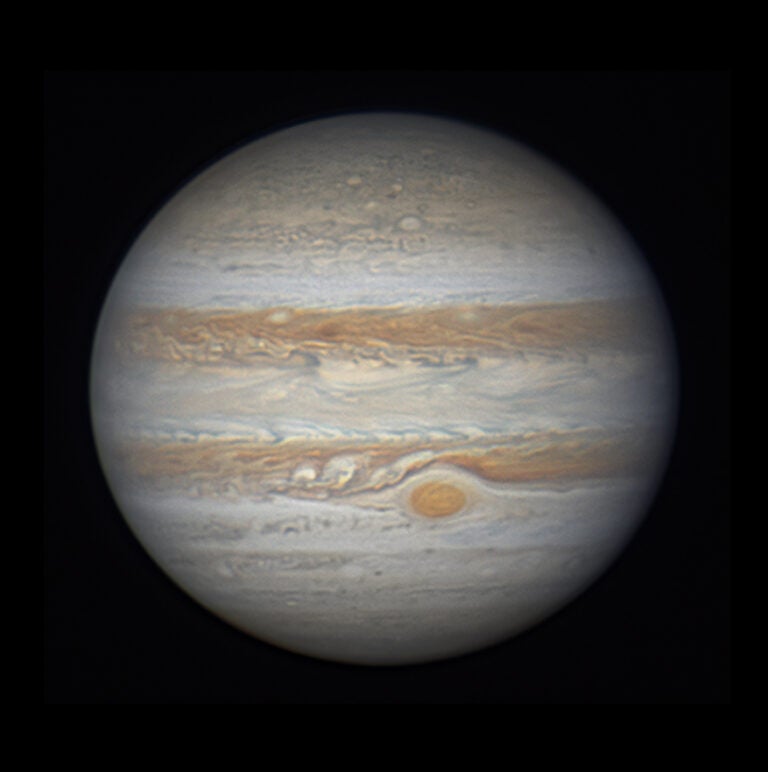For simplicity, I tend to use a #2 graphite pencil for most of my deep-sky drawings. After all, a pencil and paper are all that’s really needed to record an observation. Is a minimalist approach the best option, though? An entire set of graphite pencils could be more useful to render star magnitudes and contrast tones, and HB-grade pencils fit the bill. But what do those grades mean?
The letter H in the grading system designates the graphite’s hardness, the B its blackness. The degree of each attribute is represented by a number. For example, in a set containing 8B, 6B, 4B, 2B, HB, 2H, and 4H pencils, an 8B creates the blackest mark, and also has the softest lead. HB (similar to a #2 pencil) is medium-grade. 4H has the hardest lead and produces the lightest mark. I’ll explain their use with two objects in the constellation Cygnus the Swan.
The Crescent Nebula (NGC 6888) lies at the heart of the swan, 2.7° southwest of Gamma (γ) Cygni. Its elongated shell-like shape measures 20′ by 10′ and contains at its center a magnitude 7.4 Wolf-Rayet star. WR 136 (also known as HD 192163), like others of its kind, is shedding material from its surface and then blowing it away with its strong stellar winds, both building and carving out the Crescent’s distinctive shape.
This faint emission nebula responds well to Oxygen-III (OIII) and ultra-high contrast (UHC) filters, but you’ll need a night of good transparency to observe it. Through an 8-inch telescope, the Crescent resembles a shallow arc that cradles WR 136. It begins at an 8th-magnitude star on its northeast tip and reaches north to a 7th-magnitude double before sloping southwest. The western edge thickens through a 12-inch scope, with knots and bright filaments stretching throughout the arc. Look for wisps of nebulosity in its southern region. Through excellent transparency, increased aperture will reveal its faint oval shape.
I nudged my telescope 6° southeast of Eta (η) Cygni to locate the next target, planetary nebula NGC 6894. It has a magnitude of 12.3 and spans 44″ by 39″. A 9th-magnitude star shines 7.5′ to its north.
NGC 6894 appears as a gauzy circular patch through an 8-inch telescope. The ring surrounding it pops into view with the use of an OIII filter. Increasing aperture to 12 inches reveals a slight northeast to southwest elongation with a star just inside its northwest rim. Through a 16-inch scope, you can spot bright specks along the northwest and southeast edges.
Once I had drawn the star field and base layer of the planetary, I switched to a 4B pencil to enhance the ring. I softened it with a clean blending stump, then added the star on its northwest rim. I rendered the bright specks along the ring with an HB pencil and then softened them by gently tapping with a 3/16-inch tortillon, a blending tool with a firm, narrow tip that works best for tight areas.
It doesn’t take long to appreciate the contrast range provided by a set of HB-grade pencils. Be sure to give them a whirl during your lunar and planetary sessions as well.

